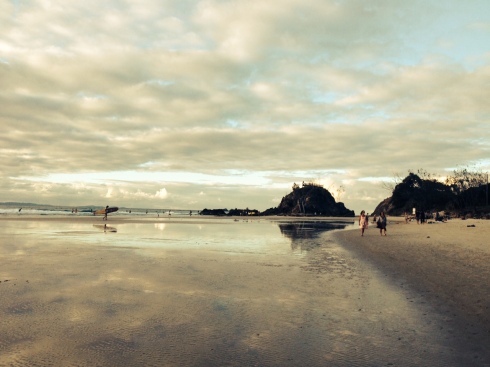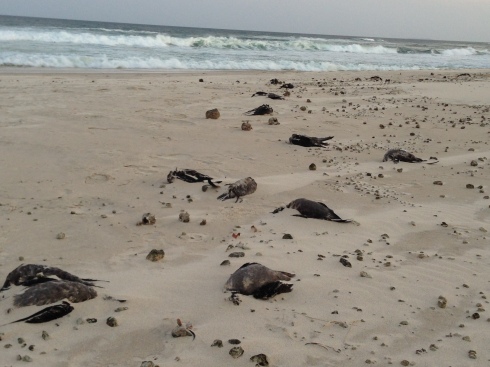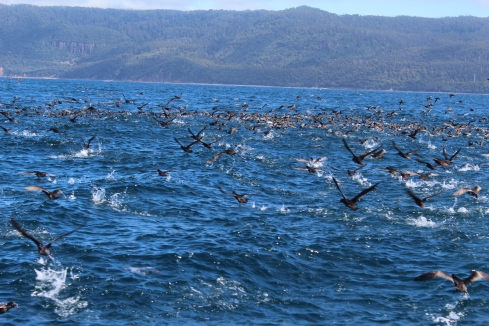The beaches near and not too far from us are so full of life, and not just human life (although there’s a lot of that). The ‘beachscape’ is always changing shape, carried away and built up again with the wild winds and shifting tides.
This weekend, on a visit to Byron Bay, the beach was back. Where not so long ago it was a strip of sand, now it stretches far and wide.
And on another beach wander closer to home, the shoreline at Pottsville beach is littered with pumice stone. Queensland University of Technology’s pumice expert Dr Scott Bryan explained the mystery to Sydney Morning Herald columnist Tim the Yowie Man:
‘ “It’s the result of the July 2012 eruption of the Havre Seamount, which is about 1000 kilometres north of Auckland”… the underwater volcano spewed out a ”raft of pumice estimated to be more than 20,000 square kilometres in size”. That’s a surface area bigger than Belgium.’ (SMH, 10 January 2014)
A closer look at the ‘moving’ volcanic stones littering our beach reveals that marine creatures have hitched a ride on the pumice. Sometimes they are welcome, like coral-building species, and sometimes they are invasive species.
There is something magical about wandering along a beach somewhere. Something that feeds your soul, connects you to the power and mystery of nature, and keeps drawing you back time and again.






